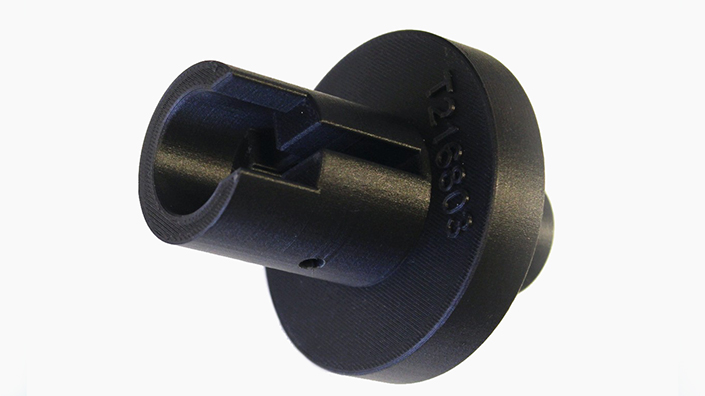LISI Aerospace and Curtiss-Wright Sensors UK are established suppliers in the Aerospace and Defence industries, producing specialist components, fasteners and sensors for leading OEMs.
These long-standing aerospace suppliers are presented with similar manufacturing requests from their clients: short batch runs, supporting obsolete parts, producing complex components and delivering bespoke projects, all whilst maintaining standards of excellence in quality, service and delivery.
Furthermore, in the current climate, manufacturing firms are encountering high costs for tooling and spare parts, over reliance on external suppliers’ long lead times and high demand in machine shops.
These engineering challenges prompted both LISI Aerospace and Curtiss-Wright to take a fresh look at their production line and develop a cost-effective solution.
Working with CREAT3D through applications engineering and advice, and by introducing Markforged 3D printing technology, LISI Aerospace and Curtiss-Wright have embedded Additive Manufacturing technologies in their production processes and are reaping the rewards with huge cost and time savings, and cross-functional team benefits through hundreds of quick-win applications.
Bespoke 3D Printed Tooling, Delivered Directly to the Production Line
“The speed at which we can solve problems is superb. We are made aware of the problem in the morning, and by lunchtime the operator has bespoke tooling to use. It enables us to keep Production moving. I don’t know how we managed before Additive!” – Pete Netherton, Senior Manufacturing Engineer, Curtiss-Wright Sensors UK
In the last two years of owning Markforged 3D printers, the Curtiss-Wright Opertaions Team have designed and printed over 600 different pieces of tooling. Ranging from assembly aids, jigs, brackets, orientation and locator jigs, holding nests, blocks, covers, tools, clips, clamps, racks, trays and moulds, the applications are vast and forever expanding.
 Test Jig: Holds sensor in place during final testing. A legacy component, produced in small quantities
Test Jig: Holds sensor in place during final testing. A legacy component, produced in small quantities
Traditional manufacture: Cost to machine in Stainless Steel: £200 - £300
Lead time: 3 weeks
Using Additive: Cost to 3D print £33.60 = 88.8% saving
Lead time: 13 hours = 97.4% reduction
97.7% Typical Cost Saving with Wider Benefits
By replacing the original metal components with 3D printed parts in Nylon, LISI Aerospace are seeing cost savings of 90%+ on a wide variety of applications.

Supporting Jaws: Holds fastener during DPB process
Traditional manufacture: Cost to machine in Stainless Steel: £180
Lead time: 2-3 weeks
Using Additive: Cost to 3D print £4.15 = 97.7% saving
Lead time: 3 hours = 99.4% reduction
However, the benefits are wider than just costs and lead times. LISI Aerospace have also benefitted from:
1. Reduction of damage to fasteners during process – by switching to non-marring Nylon away from metal, LISI have seen scrappage costs reduce to zero
2. Longer term operation – 3D printed parts are more lightweight, decreasing pressures on machinery
3. Reduced production line down time – 3D printed parts are readily available on the shop floor in Supply Point Systems. When an operator needs to replace a component, they can access the approved additively manufactured part immediately
“When you can so easily see the improvements from applying Additive, it just makes you want to drive forward and change everything! There is so much more we can do, and applications we aren’t even aware of yet” – Daniel Bostridge, Production Manager High Volume 1 and High Volume 2
Click here for LISI video
Find out how you can fine tune your production line at creat3d.solutions
Contact CREAT3D to discuss your applications on 0800 689 1011 or info@creat3d.co.uk
Want the best engineering stories delivered straight to your inbox? The Professional Engineering newsletter gives you vital updates on the most cutting-edge engineering and exciting new job opportunities. To sign up, click here.
Content published by Professional Engineering does not necessarily represent the views of the Institution of Mechanical Engineers.